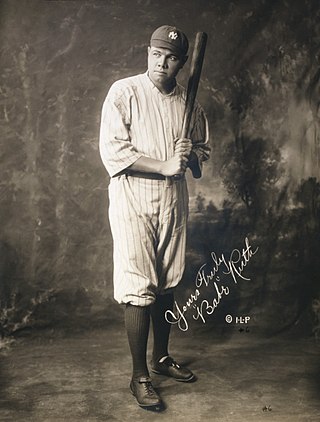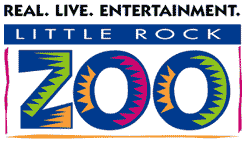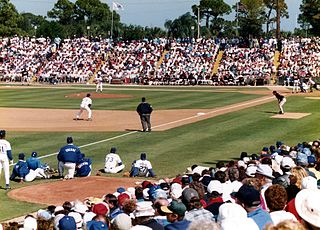
George Herman "Babe" Ruth was an American professional baseball player whose career in Major League Baseball (MLB) spanned 22 seasons, from 1914 through 1935. Nicknamed "the Bambino" and "the Sultan of Swat", he began his MLB career as a star left-handed pitcher for the Boston Red Sox, but achieved his greatest fame as a slugging outfielder for the New York Yankees. Ruth is regarded as one of the greatest sports heroes in American culture and is considered by many to be the greatest baseball player of all time. In 1936, Ruth was elected into the Baseball Hall of Fame as one of its "first five" inaugural members.

Hot Springs is a resort city in the state of Arkansas and the county seat of Garland County. The city is located in the Ouachita Mountains among the U.S. Interior Highlands, and is set among several natural hot springs for which the city is named. As of the 2020 United States Census, the city had a population of 37,930, making it the 11th most populous city in Arkansas.

Riverside Park, located in Dawson Springs, Kentucky, was originally built in 1914 to serve as a spring training park for the Pittsburgh Pirates from 1914 to 1917. Sometimes referred to as Tradewater Park, it is the only known baseball park in Kentucky to have hosted a major league team since the Louisville Colonels folded in 1899. While the original stadium was destroyed in a flood in the 1930s, it was later rebuilt in 1999. Like the original stadium, the rebuilt park is reconstructed out of wood. It is the only ballpark of its kind in Western Kentucky.

Most United States presidents have kept pets while in office, or pets have been part of their families. Only James K. Polk, Andrew Johnson, and Donald Trump did not have any presidential pets while in office. However, Johnson did take care of some mice he found in his bedroom.

Connecticut's Beardsley Zoo, located in Bridgeport, Connecticut, is the only Association of Zoos and Aquariums (AZA)-accredited zoo in the state of Connecticut. The zoo includes one of the few carousels in the state. The zoo has around 500 animals, from over 100 species, and welcomes about 280,000 visitors a year.

The Chinese alligator, also known as the Yangtze alligator, China alligator, or historically the muddy dragon, is a crocodilian endemic to China. It and the American alligator are the only living species in the genus Alligator of the family Alligatoridae. Dark gray or black in color with a fully armored body, the Chinese alligator grows to 1.5–2.1 metres (5–7 ft) in length and weighs 36–45 kilograms (80–100 lb) as an adult. It brumates in burrows in winter and is nocturnal in summer. Mating occurs in early summer, with females most commonly producing 20–30 eggs, which are smaller than those of any other crocodilian. The species is an opportunistic feeder, primarily eating fish and invertebrates. A vocal species, adults bellow during the mating season and young vocalize to communicate with their parents and other juveniles. Captive specimens have reached age 70, and wild specimens can live past 50.

The Little Rock Zoo was founded in 1926 and is located in Little Rock, Arkansas, United States. It is home to more than 725 animals representing over 200 species, and covers an area of 33 acres (13 ha). The Arkansas Zoological Foundation is a private 501 c (3) organization that raises funds for zoo development. The Little Rock Zoo is a department of the city of Little Rock. It is the largest zoo in Arkansas, and the only Arkansas zoo accredited by the Association of Zoos and Aquariums (AZA).

Hanley Ramírez is a Dominican-American former professional baseball shortstop. He played in Major League Baseball (MLB) for the Boston Red Sox, Florida / Miami Marlins, Los Angeles Dodgers, and Cleveland Indians. Ramírez is a three-time MLB All-Star and received the 2006 National League Rookie of the Year Award. While he played the majority of his career at shortstop, he also played first base, third base and left field.
Marian "Mouse" Breland Bailey was an American psychologist, an applied behavior analyst who played a major role in developing empirically validated and humane animal training methods and in promoting their widespread implementation. She and her first husband, Keller Breland (1915–1965), studied at the University of Minnesota under behaviorist B. F. Skinner and became "the first applied animal psychologists." Together they wrote the book Animal Behavior which was first published in 1966, after Keller's death.

Spring training is the preseason in Major League Baseball (MLB), a series of practices and exhibition games preceding the start of the regular season. Spring training allows new players to try out for roster and position spots, and gives established players practice time prior to competitive play. Spring training has always attracted fan attention, drawing crowds who travel to the warm climates of Arizona and Florida to enjoy the weather and watch their favorite teams play.

Ban Johnson Park was a baseball stadium located in Hot Springs, Arkansas. It was also known as Whittington Park and McKee Park. The ballpark was located within today's Whittington Park Historic District and directly across from the still active Arkansas Alligator Farm and Petting Zoo.
McCurdy Field, located in Frederick, Maryland, is the former home of the Frederick Hustlers, Warriors, and Frederick Keys, a class A minor league affiliate of the Baltimore Orioles. The current stadium structure is largely an aluminum superstructure with dual brick buildings on the sides. The field first opened in 1924. McCurdy Field was the home of the Frederick teams of the minor league baseball Blue Ridge League from 1924 to 1930.
George McKinley Barr was an American professional baseball umpire who was a pioneer in umpiring instruction. Barr worked in the National League from 1931 to 1949. Barr umpired 2,757 major league games in his 19-year career. He umpired in four World Series and two All-Star Games. Barr was the founder of the George Barr Umpire School, the earliest umpire training school and author of the first book on umpiring. Barr was a pioneer in using the inside chest protector.

Huggins-Stengel Field is a baseball field located within Crescent Lake Park in St. Petersburg, Florida, United States. It was originally constructed in 1925 as a Spring Training practice field for the New York Yankees and later hosted the New York Mets and Baltimore Orioles. The Yankees held spring training home games in St Petersburg at the field until their move to Al Lang Stadium in 1947. The field is currently used for various high school and collegiate baseball games. The facility was listed on the National Register of Historic Places in 2019.
The original Majestic Park was one of the first Major League Baseball spring training facilities. The ballpark was located at the corner of Belding Street and Carson Street in Hot Springs, Arkansas. Today, the site is in use by Champion Christian College, National Park College, and travel/tournament baseball and softball. Majestic Park has been renovated by the City of Hot Springs. Babe Ruth, Cy Young, Jackie Robinson and Hank Aaron are among the many who have played at the site.
Fogel Field was a baseball park located in Hot Springs, Arkansas, utilized for spring training games and baseball camps between 1912 and 1952. The site was also known as Fordyce Field and Holder Field. Fogel Field was built in 1912 as a spring training site for Major League Baseball teams. The field was named for Horace Fogel, President of the Philadelphia Phillies. Fogel Field hosted the Phillies (1912) and the Pittsburgh Pirates. The Kansas City Monarchs (1928), Homestead Grays (1930–1931) and Pittsburgh Crawfords (1932–1935) of Negro league baseball also used Fogel Field as their spring training site.
The Hot Springs Arlingtons were a professional Negro leagues baseball team based in Hot Springs, Arkansas from 1896 to 1904. The Hot Springs Arlingtons played as members of the Southern Negro League and hosted home games at Whittington Park. The team was known as the Hot Springs Blues in 1904.

Wearn Field was a ballpark located in Charlotte, North Carolina and home to amateur and professional baseball in Charlotte from 1912 to 1940. Wearn Field was built and owned by Hornets club owner J. H. Wearn alongside his lumber mill. Home plate was at the corner of South Graham and Winona Streets; the right field corner was at South Graham and Commerce.













